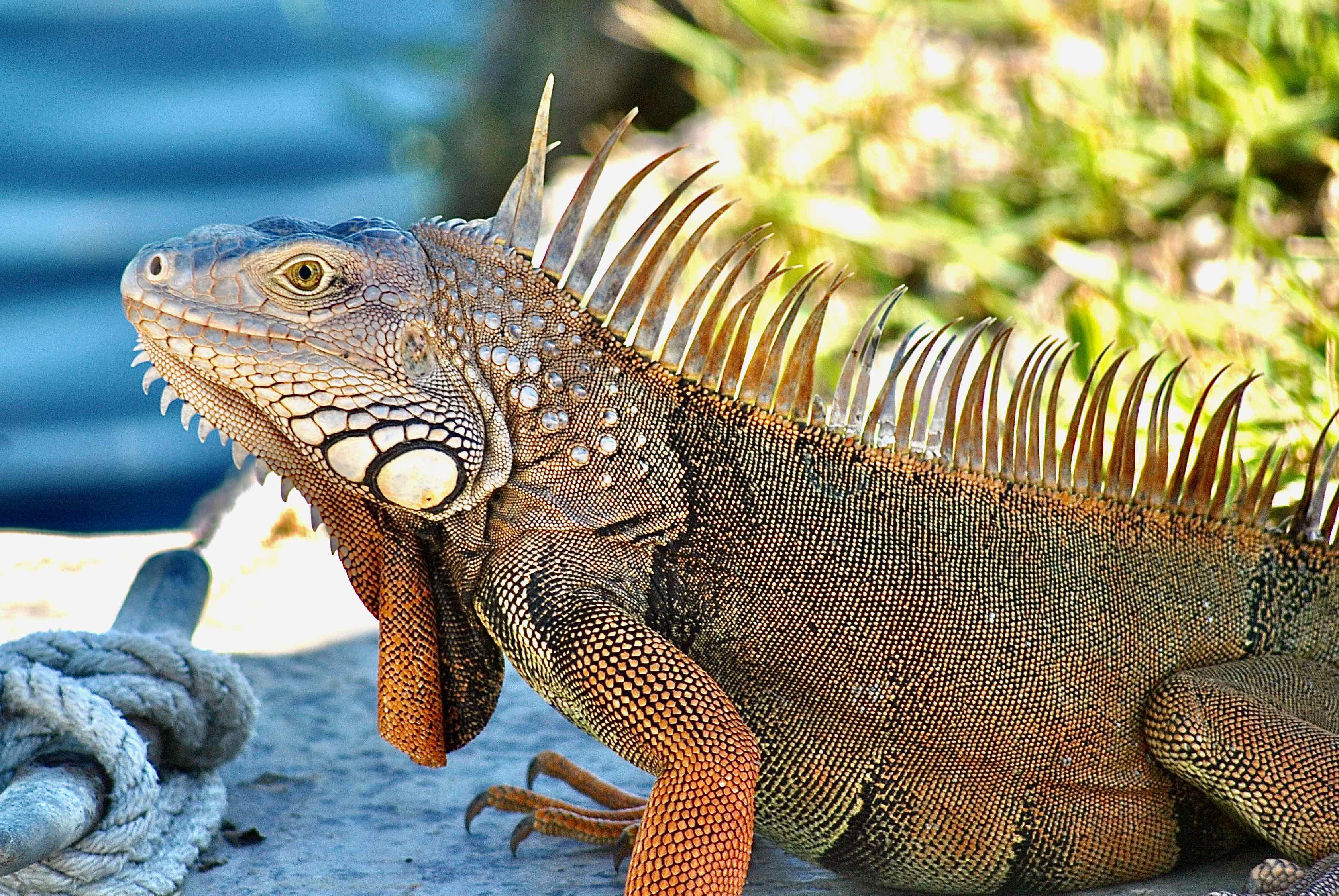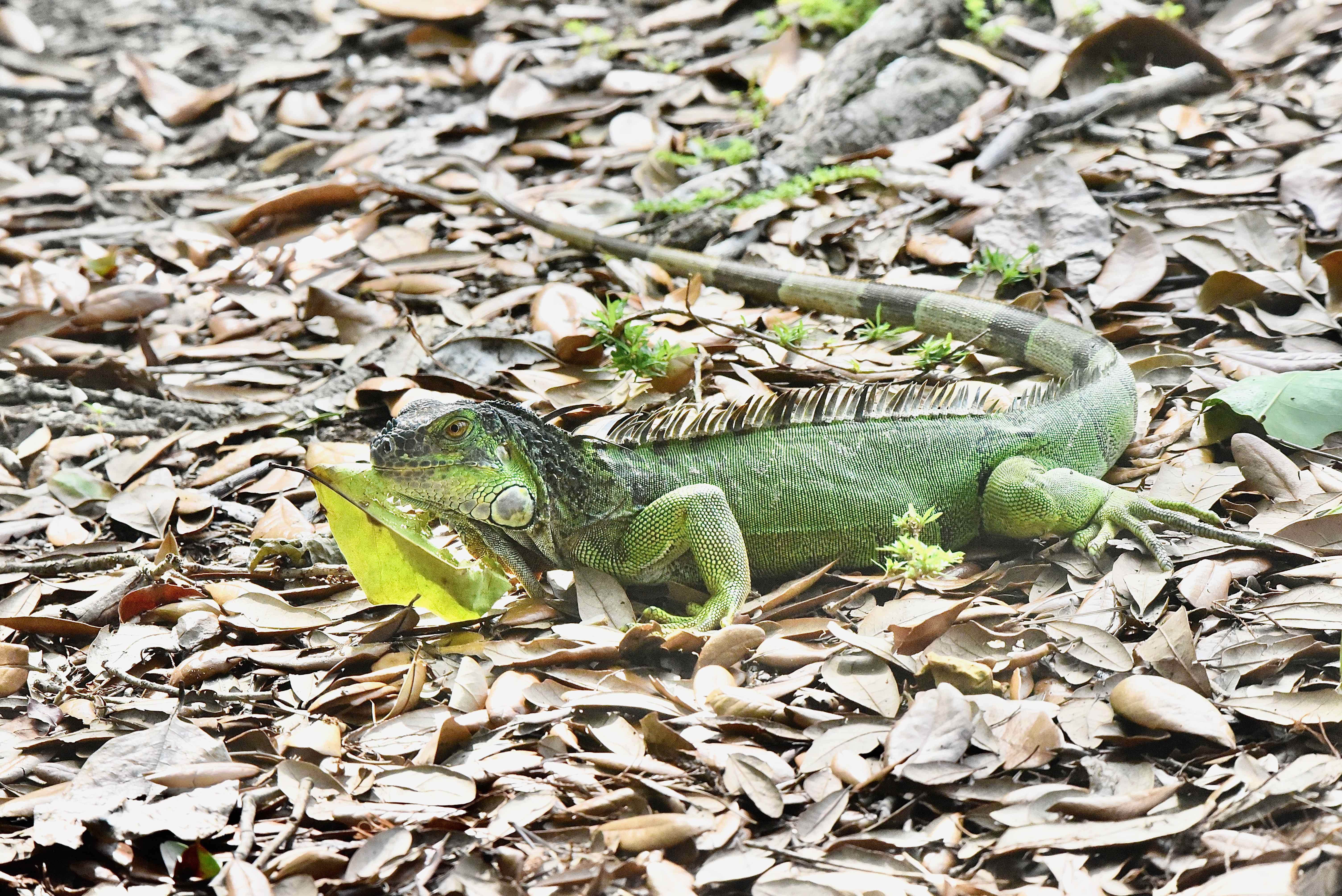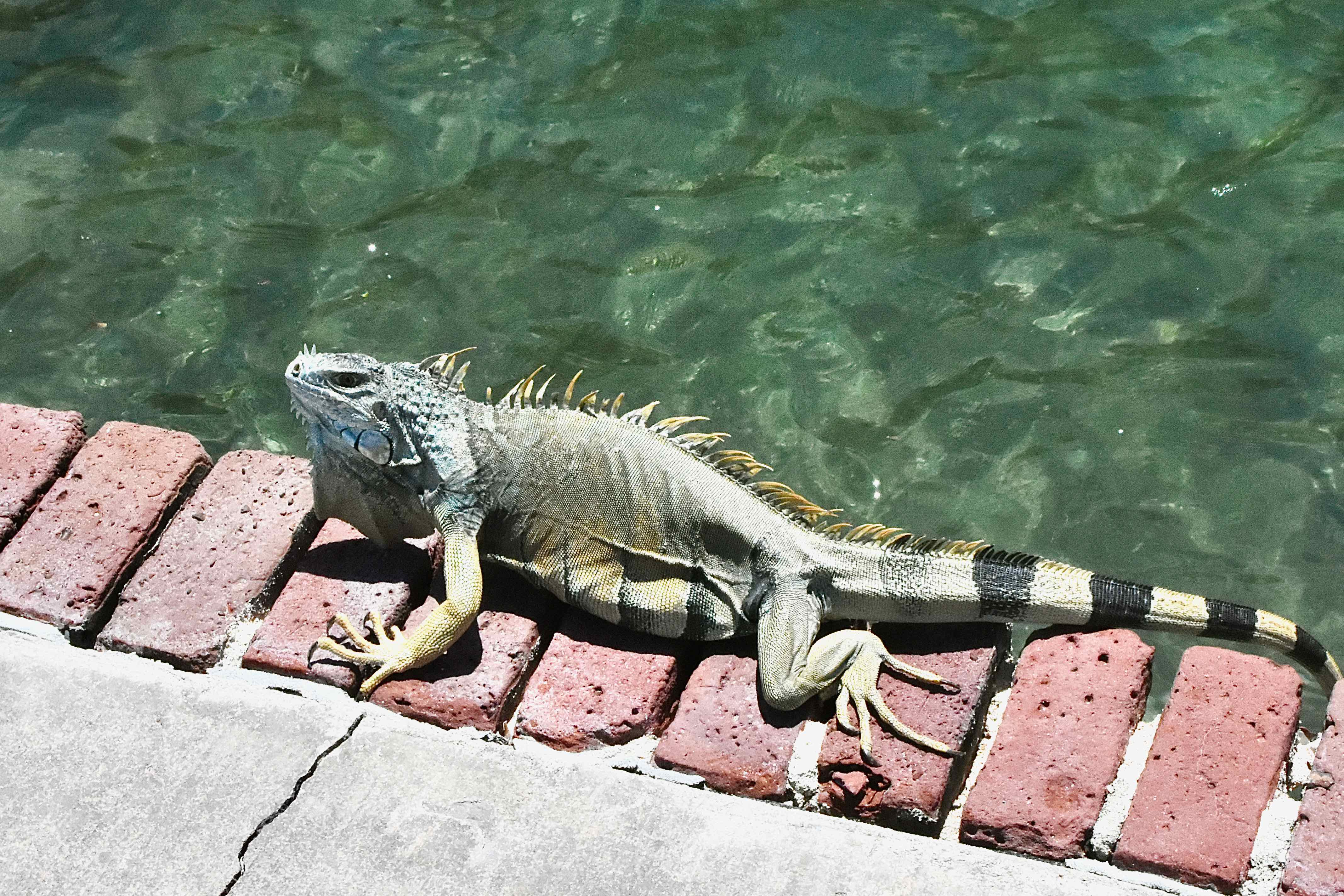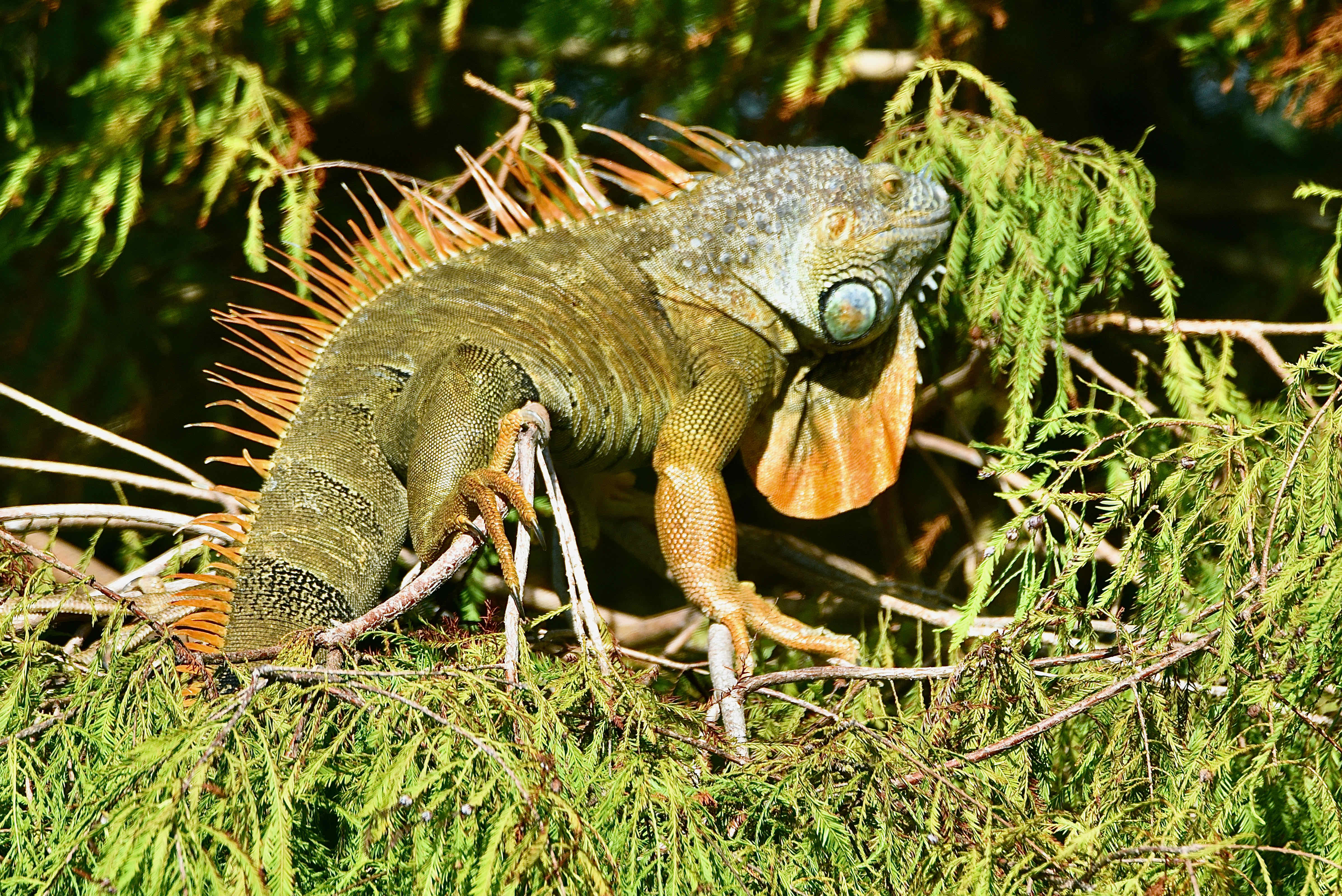
Green iguana, photographed on Summerland Key, Florida Keys, Monroe County, in December 2013.
South Florida is full of foreign invaders. The green iguana is one of the oldest, most common and probably the easiest to identify. And its scientific name has got to be the easiest ever: Iguana iguana.
According to the Florida Fish and Wildlife Conservation Commission, green iguanas have called South Florida home since 1966 — long enough that they've become an accepted part of the scenery. They can be destructive critters, but they don't quite meet the definition of an invasive species, either.
The green iguana is a native of the Caribbean, Mexico, Central America and South America. How it got here is uncertain, but there are two main theories. One has it that it got here as part of the exotic pet trade, escaped captivity, was released into captivity by pet owners unable or unwilling to care for a full-grown iguana, or both.
The second theory has it hitchhiking a ride to the Keys on a cargo ship hauling fruit (a favorite food) from South America, jumping ship and finding a new home in the wilds and not-so-wilds of South Florida, where it enjoyed the mild climate, unlimited food supply and limited list of predators.
Green iguanas are mostly herbavores, plant eaters, unlike native lizards, so they don't compete for the same foods. They do, however, share the same arboreal (tree canopy) habitats, but the FWC says their impact on native species is difficult to measure so they haven't been formally classified as invasive.
But iguanas and their salad-loving palates aren't harmless as far as us humans are concerned. Their eating habits make them a pest; they'll eat tomatoes, mangos, orchids and other ornamentals and landscape plants. They will burrow under sidewalks, seawalls and foundations, often undermining their structural integrity. Their droppings are unsightly, smelly and might carry salmonella. Oh and while we're on the subject of poop, we might as well mention that juvenile iguanas will eat the dropping of adults in order to acquire the gut bacteria needed to digest plant matter. Yum!
Green iguanas can be big suckers, exceeding six feet in length and weighing nearly 18 pounds. Despite the name, green iguanas vary widely in color. Younger iguanas can be blotchy but become more uniform as they age. Iguanas will appear darker in the morning, the better to absorb heat and warm their bodies; they turn lighter to reflect heat later in the day. Mood, health and social status also can affect their color. Males tend to be larger and more brightly colored than females and they have a more prounced dewlap, that expandable pouch under the throat.
Iguanas reach sexual maturity between two and five years of age. The average lifespan in the wild: eight years. Females lay their eggs 65 days after they've been fertilized. They'll dig a burrow roughly 20 to 40 inches deep and deposit between 10 and 30 eggs. That's pretty much the limit of the iguana's parental care. The eggs will hatch in three or four months, the young coming equipped with an egg tooth to work their way out of their shells.
And while they are largely vegetarians they are not exclusively vegetarians. They will munch on insects, lizards, nesting birds, hatchlings, eggs and other small animals on occasion. Juveniles in particular will have a larger proportion of animal protein in their diets than adults. As noted above, iguanas become more uniform in color as they mature. And as also noted above, iguanas are arboreal; they tend to stratify by age in the canopy, with younger iguanas living lower, older higher.
When young, iguanas are pretty much prey for everything out there — raccoons, crows, wild hogs and fish will dig up the eggs. Snakes, hawks and owls will snack on the hatchlings. But when they reach about two feet in length, the list of predators shrinks to alligators and us. But green iguanas are susceptable to cold, and they've been known to fall out of trees dead during periods of sustained low temperatures. The winter of 2010 was particularly tough on South Florida's iguana population. Alas, that's a rare problem in South Florida and almost never in the Keys, where these photos were shot. But it does limit how far north they can spread.
Green iguanas are members of Iguanidae, the iguana family, as you might guess! That's easy, too.
Photo Gallery — Click on photo for larger image
U.S. Department of Agriculture Distribution Maps

Links for
- Institute for Regional Conservation
- Natives for Your Neighborhood
- Atlas of Florida Vascular Plants
- USDA PLANTS Database
- Flora of North America
- Lady Bird Johnson Wildflower Center
- Institute for Aquatic and Invasive Plants
- Cornell Laboratory of Ornithology
- Audubon Society
- Florida Fish and Wildlife Conservation Commission
- National Geographic Society



